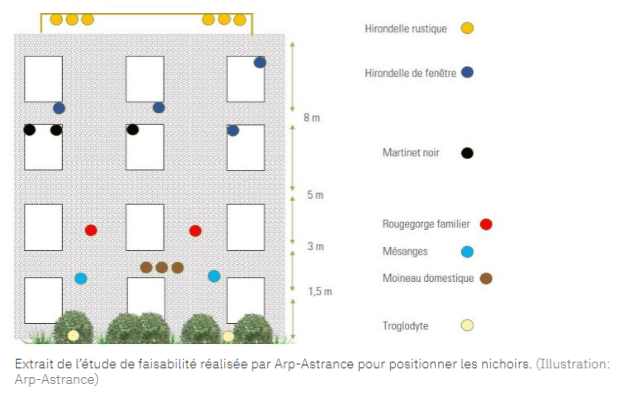For the building the nest Eaglestone has chosen to implement a certification that is not yet used in Luxembourg: biodivercity
We know the certifications BREEAM, DGNB, HQE or the most recent Well. A new label is appearing in Luxembourg with The Nest project developed by Eaglestone in Gasperich. This is the BiodiverCity which rates the performance of building projects on the subject of biodiversity in the urban environment. "This certification was created in France by the CIBI in 2013 and aims to promote the design and construction of buildings that give a significant place to nature in the city," explains Julie Sacré, developer at Eaglestone.
For the time being, this certification has mainly been used in France, but it is a way of tackling the issue of the relationship between the living and the built environment, as well as strengthening the ESG strategy of buildings.
A major challenge ahead
The challenge of preserving biodiversity is set to become a major issue for the construction industry, in the knowledge that "zero net artificialisation" will also be the new norm in the short term. "Until now, developers have paid attention to climate, energy and resource conservation issues, but not to biodiversity. The project The NestBecause it was conceived from the outset as a project that was attentive to environmental and bioclimatic issues, it is the perfect project to take our thinking even further and incorporate the subject of biodiversity in the city," says Julie Sacré.
Because there is still little experience on this subject, many points still raise misconceptions. "We have a lot of explaining to do, almost educational work, to make people understand the benefits that a greater presence of nature can bring to a building," explains Julien Sacré.
"Even if the subject of biodiversity is generally well received by the various people involved in the project, we also quickly find ourselves faced with very pragmatic questions: Will we not be invaded by insects, how are we going to maintain the plants, will they age well, etc.?
We are therefore preparing to make our future customers aware of these issues, so that this approach does not become a sales barrier".

Four areas of study
To obtain certification BiodiverCityThe process must start at the design stage. "When the building is being designed, an ecological assessment is carried out on the site before work begins. This study identifies the biotopes already present on the site and in the surrounding area. The strengths and weaknesses of the site are identified, enabling a specific deployment plan to be drawn up for each project," explains Julie Sacré.
La certification specifically relates to four points analysis :
Commitment from project ownerthe resources deployed, the environmental benefits and the benefits for users. Each of these axes is graded from A to E - A being the highest grade.
"For the project The NestWe are working to achieve a score of AAAB"says Julie Sacré. "The last axis, that of the users, is more difficult to control because it depends on the will of the building owner and the users.
Plants, but also nesting boxes and appropriate night lighting
When you think biodiversityWe're going to plant indigenous plants capable of adapting to climate change. "We're going to plant indigenous plants capable of adapting to climate change. These plantings are also being designed with thought given to the different plant strata to encourage maximum diversity in hosting wildlife, as well as the orientation of the building to protect from the sun on the south façade or allow light to pass through on the north-facing slope."
But in addition to these attentions, which are already practised in many projects, there are other points of attention and design. "We paid particular attention to the building's exterior lighting system, for example, to reduce night-time light pollution. Or the number and size of glazed surfaces to avoid collisions with birds", explains Julie Sacre. Another new feature for EaglestoneThe project also includes the integration of nesting boxes in the façade. "From the outset, our architects had planned to use a gabion façade to provide a habitat for small wildlife. But with the certification process underway, we have gone further and are also planning nesting boxes at different heights for several species.

Basements are also built flush with the facades, without extending beyond them, to ensure maximum infiltration of rainwater into the ground. In addition to these elements on the exterior of the building, a covered atrium planted will be installed. This space will not be taken into account for certification purposes, but will nevertheless contribute to the quality of the environment. well-being the building's occupants. This atrium represents an open-ground surface area of around 560 m, for a planted surface area of around 650 m° in the atrium (i.e. 86% of interior open-ground planted surfaces). Issues relating to biodiversity are now identified by Eaglestone as priorities for their projects. "Even if we don't necessarily implement a label every time, we will certainly apply these design methods to our future projects," says Julie Sacré. In addition to this Biodivercity, The Nest is aiming for BREEAM Out Standing, Carbon Neutral Foodprint and Well Gold certification.
Technical details :

